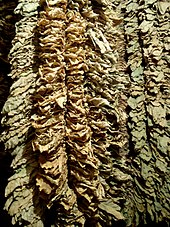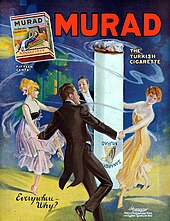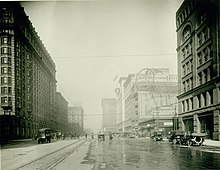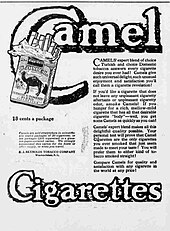| This article needs additional citations for verification. Please help improve this article by adding citations to reliable sources. Unsourced material may be challenged and removed. Find sources: "Turkish tobacco" – news · newspapers · books · scholar · JSTOR (May 2022) (Learn how and when to remove this message) |

Turkish tobacco is a small-leafed variety of tobacco. Its plants usually have a greater number and smaller size of leaves than American tobacco, and are typically sun-cured. These differences can be attributed to climate, soil, cultivation and treatment methods. Historically, it was cultivated primarily in Thrace and Macedonia, which are now divided among Bulgaria, Greece, North Macedonia, and Turkey, but it is now also grown on the Black Sea coast of Turkey, in Egypt, in South Africa and elsewhere.
The name "Turkish" refers to the Ottoman Empire, which ruled the historic production areas until the late 19th/early 20th century. The term Oriental tobacco has also been used for the leaf.
History

Tobacco originated in the Americas and was introduced to the Ottoman Turks by the Spanish. The Ottoman people over time developed their own method of growing and using tobacco.
Many of the early brands of cigarettes were made mostly or entirely of Turkish tobacco; today, its main use is in blends of pipe and especially cigarette tobacco, which it is suited for.


In the early 1900s, manufacturers of Turkish and Egyptian cigarettes tripled their sales and became legitimate competitors to leading brands. The New York-based Greek tobacconist Soterios Anargyros produced the hand-rolled Murad cigarettes, made of pure Turkish tobacco. One of the most unusual advertising campaigns for any cigarette was the long-running series for Murad made by Rea Irvin.

Tastes in Europe and the United States shifted away from Turkish tobacco and toward Virginia tobacco, during and after the First World War.
Cigarettes containing Turkish tobacco (which includes those varieties grown in what is now Greece) exclusively continued to be manufactured and sold as "Turkish cigarettes" in the US (brands Murad, Helmar, Fatima and others), the UK (Sullivan & Powell, Benson & Hedges, Fribourg & Treyer, Balkan Sobranie) and Germany (where the so-called "Orientzigaretten" had the major market share before the Second World War)
They are not available anymore, and many brands, like Murad, disappeared.
Turkish tobacco in American blends

Turkish tobacco was introduced to American cigarettes in 1913 by the Camel brand, blended with Virginia and Burley leaves.
Today, it remains a key ingredient in American blend cigarettes Demand remains high; however, the capacity to grow it remains limited, resulting in it being one of the most expensive types of tobacco in cigarette blends.
See also
Notes
- Jordan Goodman (1994). Tobacco in History. Taylor and Francis. p. 97. ISBN 9780203993651.